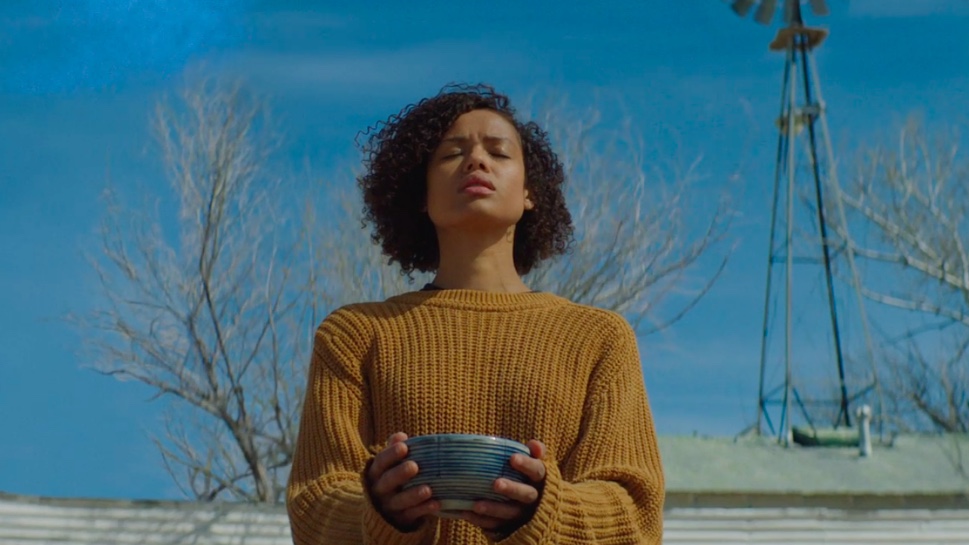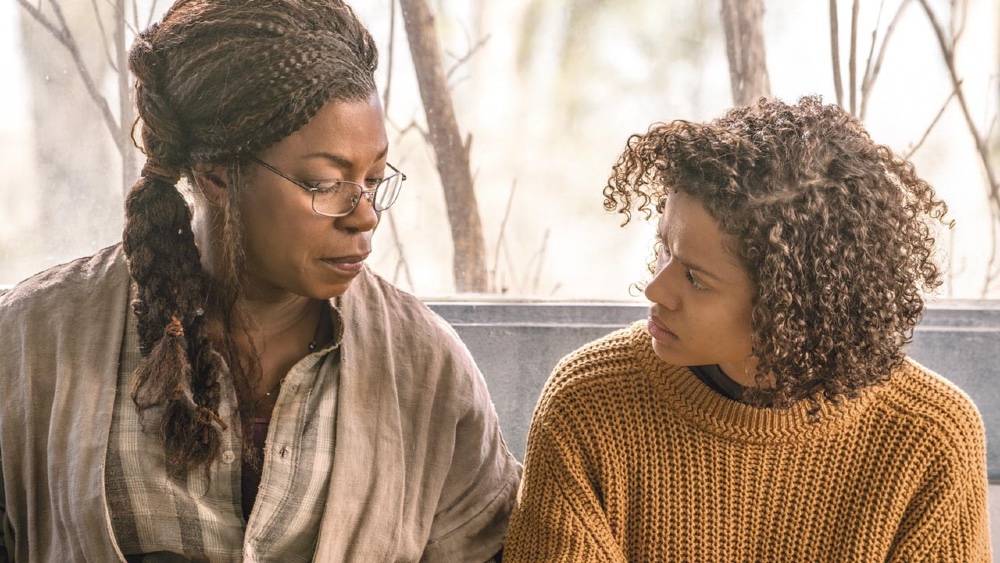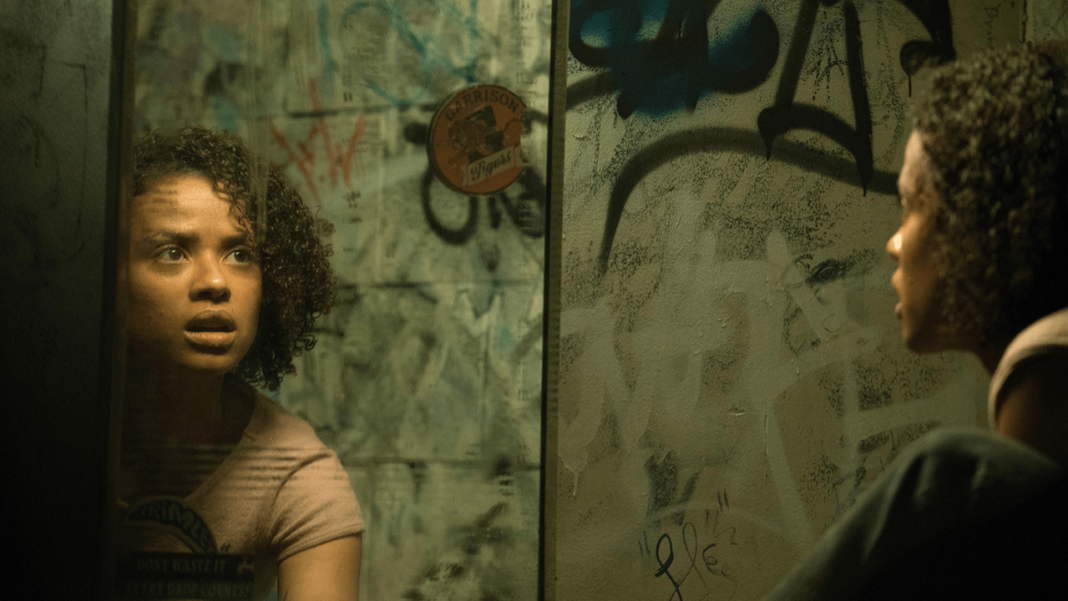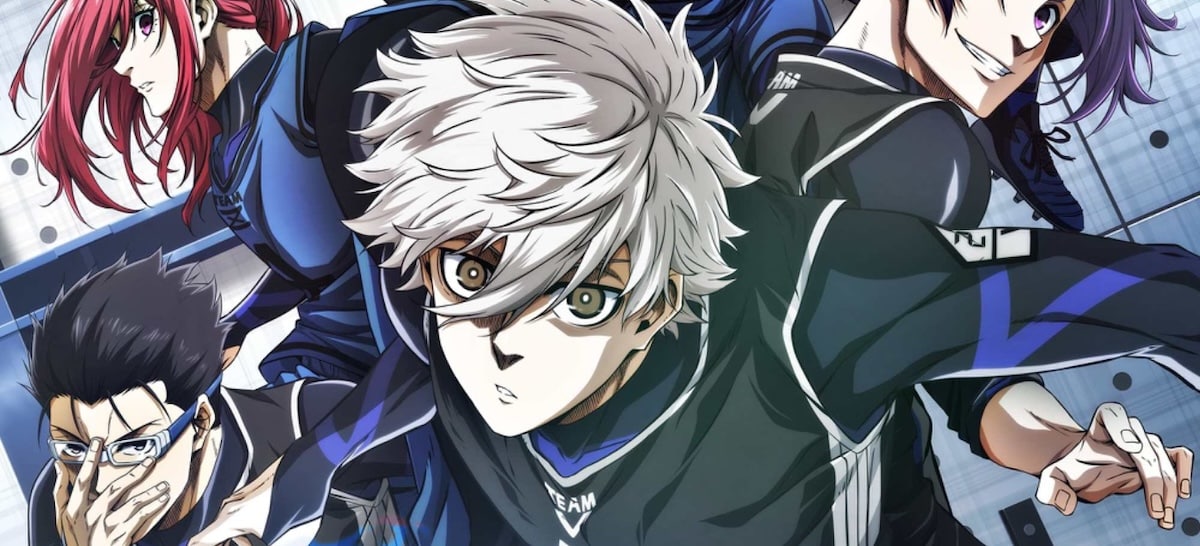Every once in a while, a filmmaker comes along with an original take on a super-powers movie, one that doesn’t require paying millions to get the film rights to an existing comic character or just as much money for CGI. It’s also something that’s been done even more in comics as various writers/artists have created their own worlds/characters and tried to put a twist on what’s offered by the Big Two. As far as movies are concerned, it often means making the movie outside the studio system on a shoestring budget.
That was certainly the case with James Gunn’s Super (as well as his upcoming Brightburn) and Josh Trank’s Chronicle, which had the benefits of studio distribution. That also seems to be the case with Julia Hart’s debut feature Fast Color.
We’re introduced to the world of Fast Color with an intro that explains that the world’s water resources have dried up, making water a commodity. No, this doesn’t mean we’re going to get something in the vein of the Mad Max movies, because this is an indie movie without the benefits of a large CG budget.

In this environment, we’re introduced to Gugu Mbatha-Raw’s Ruth, a woman on the run from the authorities due to her powers: she has seizures which turn into powerful tremors, and which she hasn’t quite gotten under control. While this could have been a storyline from any X-Men comic, this is a much more subdued affair focused on this one character. After a few encounters with people who clearly don’t have good intentions for her, Ruth ends up in the small town of Garrison, where she reconnects with her mother (Lorraine Toussaint) and meets a young girl named Lila (Saniyya Sidney), who turns out to be Ruth’s daughter. Both of them have powers, too. We also meet the town’s sheriff (David Strathairn), who seems to be caught in the middle between trying to protect these super-powered-women and doing his job.
You’ll probably realize right away that Fast Color is not your typical superpowers movie, as it’s more of a character drama. Despite the title, it’s exceedingly slow, and not in a deliberate way to build tension either. Clearly, Hart was trying to explore superpowers and the realm of sci-fi in a much more grounded, real-world manner, but Ruth is never that interesting when we’re not seeing her using her powers.

If you’ve seen Mbatha-Raw’s early film Belle, you’ll know what a powerhouse she is as an actress. Her scenes with Toussaint are generally good even if the script (co-written by La La Land producer Jordan Horowitz) is somewhat lacking. Young Sidney — whose previous two movies were both Oscar Best Picture nominees — does fine, even if adding a kid to the movie is almost as aggravating as putting the young Monica Rambeau in Captain Marvel. I normally wouldn’t fault a movie for being so dialogue-driven if what was said was particularly compelling, but most of the acting feels flat. The stakes against Ruth never seem like anything serious.
Fast Color’s last 20 minutes finally deliver on the excitement some might be hoping for, as we see more uses of Ruth and the others’ powers, but it feels like a payoff that wasn’t earned by the first two-thirds of the movie.
Fast Color isn’t bad — I just wish I could have liked it more, since it had a solid premise, but the execution leaves a lot wanting. Hart has delivered a perfectly fine first feature, although other than how the powers are depicted, there’s nothing particularly flashy or memorable (or fast) about Fast Color.
Rating: 6 out of 10








Comments are closed.